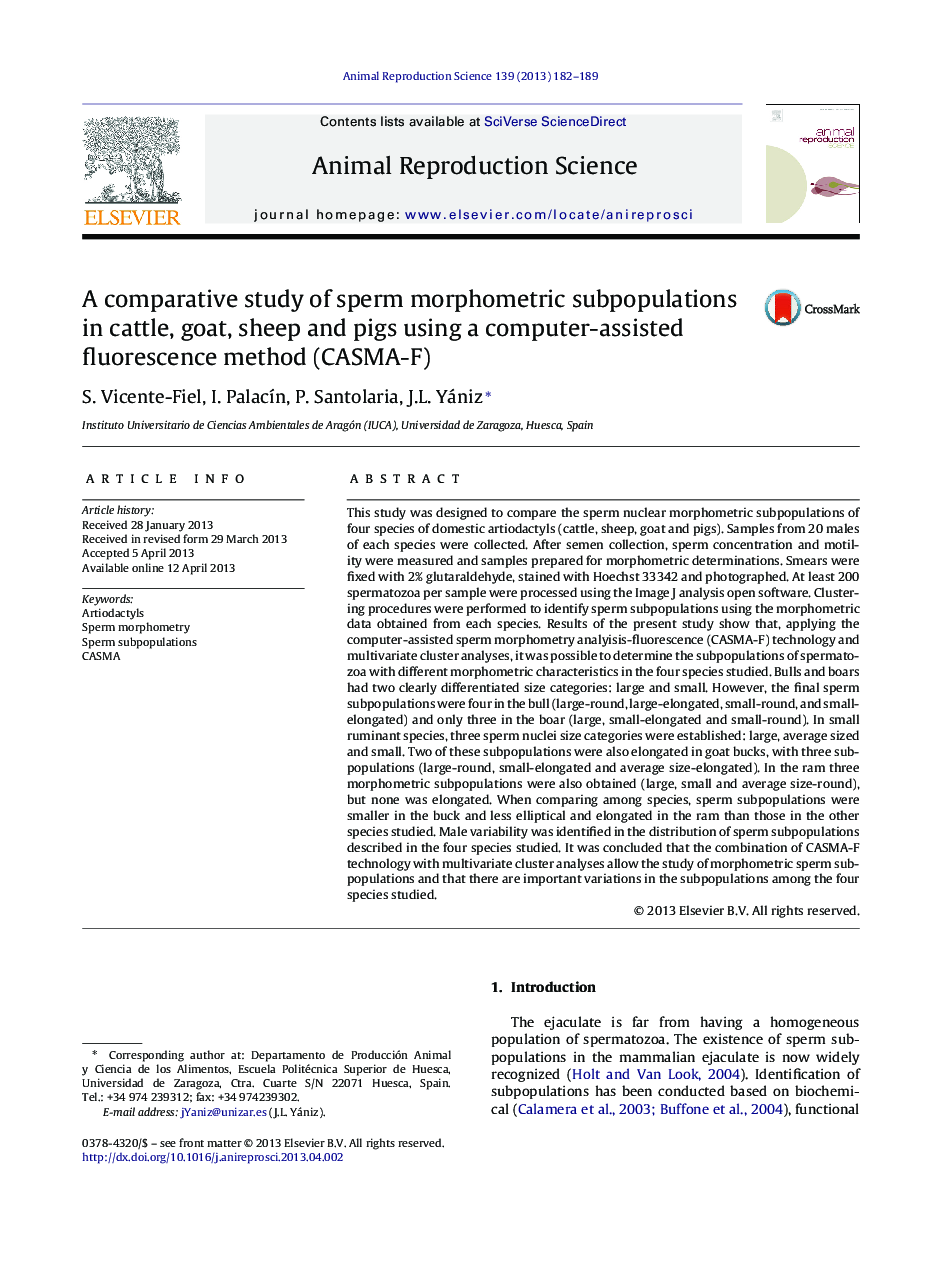| Article ID | Journal | Published Year | Pages | File Type |
|---|---|---|---|---|
| 2073049 | Animal Reproduction Science | 2013 | 8 Pages |
This study was designed to compare the sperm nuclear morphometric subpopulations of four species of domestic artiodactyls (cattle, sheep, goat and pigs). Samples from 20 males of each species were collected. After semen collection, sperm concentration and motility were measured and samples prepared for morphometric determinations. Smears were fixed with 2% glutaraldehyde, stained with Hoechst 33342 and photographed. At least 200 spermatozoa per sample were processed using the Image J analysis open software. Clustering procedures were performed to identify sperm subpopulations using the morphometric data obtained from each species. Results of the present study show that, applying the computer-assisted sperm morphometry analyisis-fluorescence (CASMA-F) technology and multivariate cluster analyses, it was possible to determine the subpopulations of spermatozoa with different morphometric characteristics in the four species studied. Bulls and boars had two clearly differentiated size categories: large and small. However, the final sperm subpopulations were four in the bull (large-round, large-elongated, small-round, and small-elongated) and only three in the boar (large, small-elongated and small-round). In small ruminant species, three sperm nuclei size categories were established: large, average sized and small. Two of these subpopulations were also elongated in goat bucks, with three subpopulations (large-round, small-elongated and average size-elongated). In the ram three morphometric subpopulations were also obtained (large, small and average size-round), but none was elongated. When comparing among species, sperm subpopulations were smaller in the buck and less elliptical and elongated in the ram than those in the other species studied. Male variability was identified in the distribution of sperm subpopulations described in the four species studied. It was concluded that the combination of CASMA-F technology with multivariate cluster analyses allow the study of morphometric sperm subpopulations and that there are important variations in the subpopulations among the four species studied.
